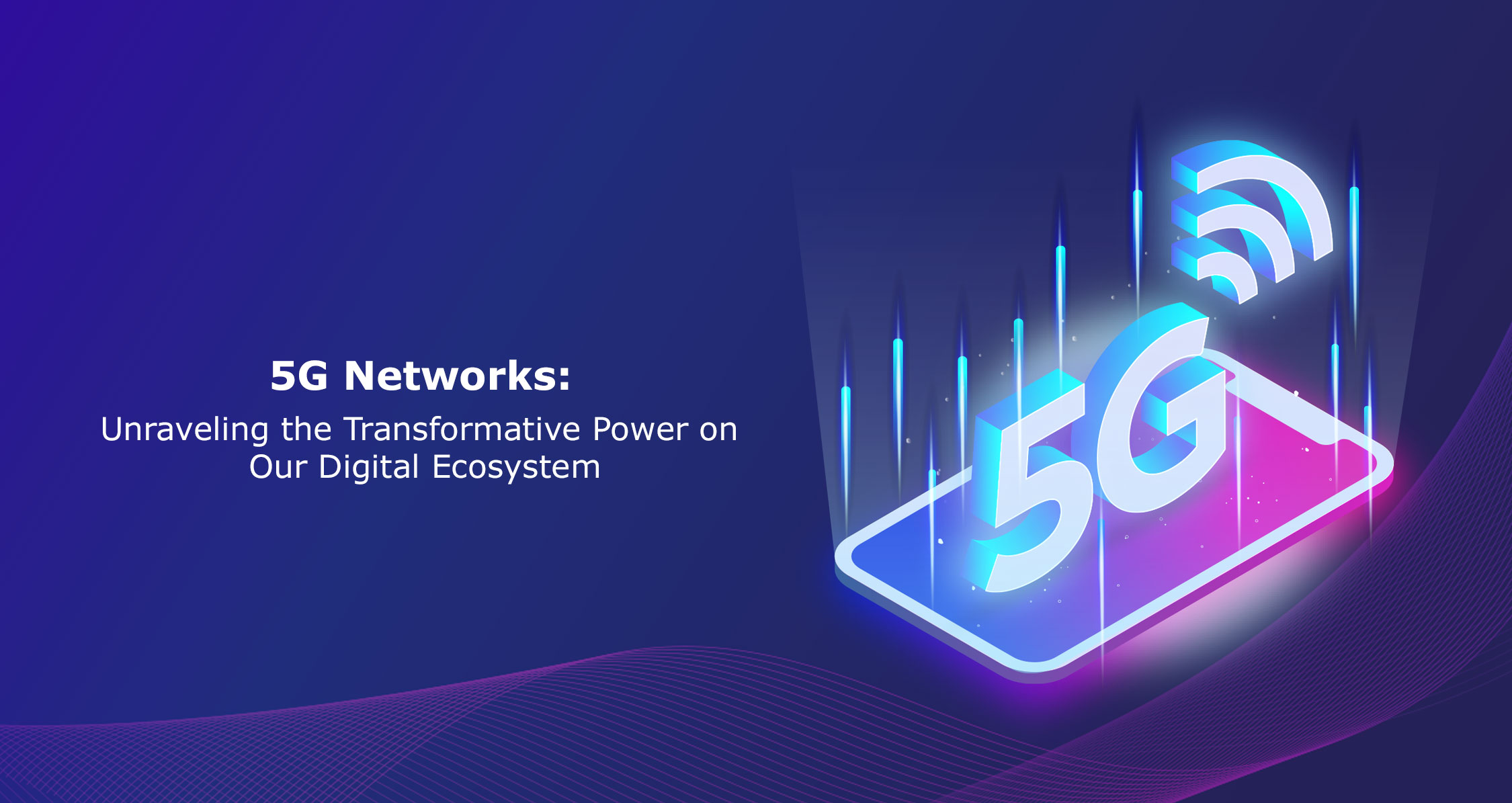
Image Credit: Freepik
The advent of 5G technology is poised to usher in a new era of connectivity and transform the way we use technology. With its promise of faster data speeds, reduced latency, and increased capacity, 5G networks have the potential to revolutionize various aspects of our lives, from consumer experiences to business operations. In this article, we will explore the key features of 5G networks, their benefits for consumers and businesses, and their impact on industries such as healthcare, transportation, manufacturing, and more.
What is 5G and how does it differ from previous mobile networks?
5G, the fifth generation of mobile network technology, is set to surpass its predecessor, 4G LTE, in terms of speed, capacity, and efficiency. With faster data speeds, lower latency, and increased network capacity, 5G networks will enable a wide range of applications, including augmented reality, virtual reality, and the Internet of Things (IoT), to be delivered seamlessly across a broader coverage area.
At its core, 5G works by utilizing small cell sites and advanced antenna technologies to transmit and receive data. These small cells are placed closer to users, ensuring a strong and stable network connection. Additionally, 5G networks utilize beamforming, a technique that focuses the signal directly towards the user, maximizing signal strength and improving overall network performance.
The Key Differences between 5G and 4G
The introduction of 5G technology brings forth a multitude of benefits that will transform our digital ecosystem. The most notable advantage of 5G is its incredible speed. With download speeds up to 10 gigabits per second, 5G is set to revolutionize the way we consume content, stream videos, and download files. This means faster downloads, buffer-free streaming, and a seamless user experience.
Another significant benefit of 5G is its low latency, which refers to the delay between sending and receiving data. With 5G, latency is expected to be reduced to as low as 1 millisecond, making real-time applications such as remote surgery, autonomous vehicles, and virtual reality experiences a reality. The low latency of 5G will open doors to innovative technologies and applications that were previously unimaginable.
Moreover, 5G networks have the capacity to connect a massive number of devices simultaneously. This means that the Internet of Things (IoT) will thrive like never before. From smart homes and wearable devices to industrial automation and smart cities, 5G will enable seamless connectivity and communication between countless devices, creating a truly interconnected world.
Benefits of 5G for Consumers and Businesses
Enhanced Consumer Experience
For consumers, 5G will bring a myriad of benefits, including:
- Faster Speeds: With 5G, consumers can enjoy faster download and upload speeds, allowing for quick access to content and seamless streaming experiences.
- Reliable Connections: 5G networks provide more reliable connections, reducing buffering and interruptions during video calls, online gaming, and other real-time applications.
- Near-Instantaneous Response Times: The low latency of 5G networks ensures near-instantaneous response times, enhancing the user experience for applications such as online gaming and virtual reality.
New Opportunities for Businesses
The implementation of 5G technology will also open up new opportunities for businesses. Some key benefits include:
- Increased Productivity: With faster and more reliable connectivity, businesses can enhance their productivity by leveraging technologies such as cloud computing, artificial intelligence, real-time collaboration tools, and seamless remote working capabilities.
- Improved Efficiency: 5G’s low latency and high capacity will enable businesses to streamline their operations through automation, machine-to-machine communication, and real-time data analytics.
- Innovation and Competitive Advantage: 5G’s capabilities will fuel innovation, allowing businesses to leverage emerging technologies such as augmented reality, virtual reality, and the Internet of Things to create new products, services, and customer experiences.
- Internet of Things (IoT): With its ability to connect a massive number of devices simultaneously, 5G will unlock the full potential of IoT. From smart homes and connected appliances to smart cities and industrial automation, 5G will enable seamless communication and data exchange between devices, leading to improved efficiency, productivity, and quality of life.
Impact of 5G on Various Industries
Healthcare
The healthcare industry is poised to benefit greatly from 5G technology. Some potential applications include:
- Telemedicine and Remote Monitoring: 5G’s fast speeds and low latency will enable real-time telemedicine consultations and remote patient monitoring, allowing doctors to provide healthcare services remotely and patients to receive timely care from the comfort of their homes.
- Remote Surgeries: With 5G’s ultra-reliable and low-latency communication, surgeons can perform remote surgeries using robotic systems, enabling access to specialized healthcare even in remote areas.
- IoT-enabled Healthcare Devices: 5G networks will support a wide range of IoT devices in healthcare, facilitating the seamless transmission of vital patient data and enabling timely interventions and personalized healthcare.
Automotive/Transportation
5G networks will revolutionize the automotive/transportation industry, transforming how we commute and travel. Some potential applications include:
- Connected and Autonomous Vehicles: With 5G, vehicles can communicate with each other and with infrastructure systems, enabling safer and more efficient transportation. This technology will pave the way for self-driving cars, reducing accidents and congestion on the roads.
- Smart Traffic Management: 5G networks will enable real-time traffic monitoring and management, optimizing traffic flow and reducing congestion in cities. This will lead to smoother commutes and more efficient transportation systems.
- Enhanced Logistics and Supply Chain: With 5G-enabled IoT devices, logistics and supply chain operations can be optimized, enabling real-time tracking of shipments, predictive maintenance of vehicles, and efficient inventory management.
Manufacturing
The manufacturing industry stands to benefit greatly from 5G technology, enabling greater efficiency and productivity. Some potential applications include:
- Connected Factories: 5G networks will enable seamless communication between machines, enabling real-time monitoring, predictive maintenance, and process optimization. This will lead to increased efficiency, reduced downtime, and improved production quality.
- Remote Operations and Virtual Reality: With 5G, workers can remotely operate heavy machinery and equipment, reducing the need for physical presence on the factory floor. Additionally, virtual reality technologies powered by 5G can be used for training, simulation, and remote collaboration.
- Highly Automated Processes: 5G networks will support the connectivity of a vast number of IoT devices, enabling highly automated processes, such as smart inventory management, autonomous robots, and real-time data analytics for process optimization.
Other Industries
Beyond healthcare, transportation, and manufacturing, 5G networks will have a significant impact on various other industries, including:
- Retail: 5G will enable personalized shopping experiences, augmented reality try-ons, and real-time inventory management, enhancing the customer experience and optimizing operations.
- Agriculture: 5G-powered IoT devices can enable precision agriculture, allowing farmers to monitor crops, optimize irrigation, and enhance productivity.
- Entertainment and Media: 5G networks will enable high-quality streaming experiences, virtual reality gaming, and immersive media consumption, transforming the entertainment industry.
Challenges and Considerations
While the potential of 5G is immense, there are several challenges and considerations that need to be addressed:
- Infrastructure Deployment: The rollout of 5G networks requires significant infrastructure investments, including the installation of new antennas and the strengthening of existing infrastructure.
- Spectrum Management: As the demand for 5G services increases, careful management and allocation of spectrum resources are crucial to ensure optimal service quality and coverage.
- Rural Connectivity: Extending 5G coverage to rural and remote areas presents unique challenges due to the higher infrastructure costs and lower population densities. Governments and industry stakeholders must work together to bridge the digital divide and ensure equitable access to 5G technology.
Conclusion
5G networks hold immense potential to revolutionize the way we use technology, from faster and more reliable internet access for consumers to enhanced productivity and innovation for businesses. With its faster speeds, reduced latency, and increased capacity, 5G will enable a wide range of applications and services that were previously unimaginable.
However, realizing the full potential of 5G requires addressing challenges such as infrastructure deployment, spectrum management, security, and ensuring equitable access for all. As we move into the 5G era, we can expect transformative changes in various industries and a new wave of innovation that will shape the digital world of the future.

